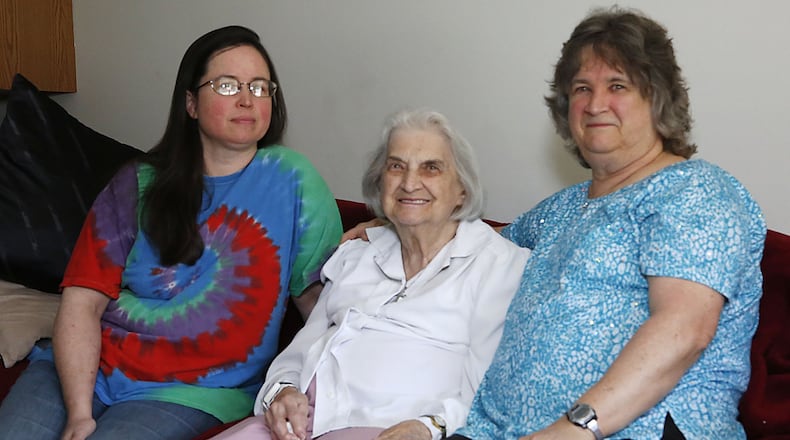“It’s an opportunity for us to be able to support the residents’ psychosocial health, as well as their physical health. They have been a godsend,” Coyle said.
Specific guidelines dictate when regulators allow these compassionate visits.
These visits have also sometimes resulted in disagreements with some families and facility operators on when the the rules apply, which prompted Ohio Department of Health officials in early January to clarify compassionate care rules.
Chip Wilkins, Dayton long-term care ombudsman, who advocates for residents’ rights, said his office has to negotiate with a facility about two times a month over how often these visits should happen. They’ve only had to file a complaint with the Ohio Department of Health once.
“The question that ultimately comes after the first visit is the facility wants to then say, ‘OK, you had your visit.’ And we turn around and say, ‘No, no, it’s visits, not visit,’” Wilkins said.
The state’s order in January said that compassionate care situations do not exclusively refer to end-of-life situations, but also includes residents who had been living with their family before recently being admitted to a home and struggling with the change in environment and lack of physical family support.
“Compassionate care visits aren’t just people who are near death or there’s some mental breakdown that they’ve had. I mean, it can be folks who are sad, they’ve lost weigh, prior to the pandemic they were new to the nursing home. There’s a whole laundry list of what is included in the order,” Wilkins said. “There are lots of reasons for compassionate care visits. And a lot of times folks don’t know that.”
Some examples of compassionate care cases spelled out by the state include:
- A resident who is grieving after a friend or family member recently died.
- A resident who needs cueing and encouragement with eating or drinking, previously provided by family or caregiver, and is experiencing weight loss or dehydration.
- A resident, who used to talk and interact with others, is experiencing emotional distress, seldom speaking or crying more frequently when the resident had rarely cried in the past.
Compassionate care visits should not be conducted on a routine basis, nor should these visits be used to substitute regular routine visits, according to the department.
Coyle said that she recognizes that all of their residents are having or have had a hard time at some point in the past year with the visiting rules.
“So while we recognize that, still we have to weigh the risk versus benefit of having visitors come into our facility with compassionate care visits. We still offer window visits. When the weather is agreeable, we do still offer outdoor visits as well. So we’ve had to try to determine which is the best for that specific situation in that resident family,” Coyle said.
Pat Acker, whose 95-year-old mother, Jeanette, lives in a nursing home in Centerville, said her mother, who has memory issues and can get the time of day confused, keeps asking when they can visit again. Acker said she knows she could go in to visit with compassionate care if her mother’s health turned, but she wants them to be together like they used to and there’s no clear timeline for when that might be.
For now, Acker will either stand in the snow at the window or the staff will help her mother get ready and by a glass door, and Acker said they’ll put their hands together on opposite sides of the door.
Acker said the workers are trying their best but are overworked and can be short staffed. The little things that are important to her mother like haircuts and fingernail trimmings can get skipped and Acker isn’t able to go in and personally care for her mother like she used to.
“It’s very, very hard. When I see her, she’s so excited to see me and then she’s crying because she can tell that I’m out in the cold and she wants me to come in and she wants to hug me and she can’t. She says, ‘Will you take me home so I can see my family?’ It tears you up because you can’t even go inside and give them a hug,” Acker said.
How to get help
If you have questions about how compassionate care visits apply to you, call your individual facility for their procedures.
If you are not sure if the rules are being applied correctly, the Long-term Care Ombudsman program is staffed with free public advocates who can help you navigate the system. The Dayton-area ombudsman office serves Montgomery, Preble, Greene, Clark, Miami, Darke, Logan, Shelby and Champaign counties and can be contacted by calling 937-223-4613 or 1-800-395-8267 or online at dayton-ombudsman.org.
About the Author

